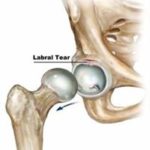How Physiotherapists Treat Pediatric Physiotherapy Conditions
Kids are naturally active jumping, running, tumbling but when something throws off their movement, it’s a whole new ball game. From birth conditions to injuries and developmental delays, children sometimes need a helping hand to get back on track. That’s where physiotherapists step in. Curious about how physiotherapists treat pediatric physiotherapy conditions? You’re not alone. These experts use playful strategies, gentle exercises, and smart science to support growing bodies and minds. Let’s peel back the curtain and explore how it all works, shall we?
How Can a Physiotherapist Help a Child?
When you think of physiotherapy, your mind might jump to sports injuries or back pain but kids? Oh yes, they benefit just as much, if not more! Pediatric physiotherapy conditions cover a wide range of issues, from cerebral palsy to muscle weakness, scoliosis, and post-fracture rehabilitation.
So, how does a physiotherapist support a child? They do it with a toolbox full of customized techniques designed for tiny muscles, wobbly balance, and growing bones. No cookie-cutter plans here it’s always tailored to the child’s age, condition, and even personality.
Common Areas They Address:
- Delayed motor milestones (like crawling or walking)
- Neuromuscular conditions (e.g., muscular dystrophy)
- Recovery post-surgery or injury
- Orthopedic conditions (like flat feet or joint pain)
- Balance and coordination issues
And hey sometimes, they’re even helping your little one learn to sit up for the very first time.
Why Early Treatment of Pediatric Physiotherapy Conditions Matters
Here’s the thing: kids’ bodies are always changing, so if something’s a bit off, early treatment can make a world of difference. Left unchecked, small issues can snowball into bigger problems later. Plus, therapy at a young age can boost confidence, improve mobility, and even help them engage more fully in school and play.
Benefits of Early Intervention:
- Promotes healthy growth and development
- Prevents long-term complications
- Improves muscle strength and flexibility
- Boosts participation in daily activities
Let’s be real watching your child struggle to move or play can be heartbreaking. But with the right physiotherapy plan, you’ll often see surprising progress sooner than you’d expect.
What Does a Child Physiotherapy Session Look Like?
First off, it’s not like your typical doctor’s appointment. In fact, it often looks a lot like playtime which is exactly the point. Kids learn best when they’re having fun, and physiotherapists know how to sneak in therapeutic work disguised as games.
A Session Might Include:
- Stretching and mobility drills
Think of it like yoga, but pint-sized and playful.
- Balance and coordination activities
Using obstacle courses or balance beams.
- Strength-building exercises
From simple squats to resistance band work.
- Sensory-motor integration tasks
Especially for kids with neurological conditions.
And parents don’t be surprised if you get homework too! Simple child physiotherapy exercises are often recommended to continue the progress at home.
How Does a Physiotherapist Support a Child Emotionally?
You’d be surprised how tuned-in pediatric physiotherapists are to a child’s emotional needs. They’re not just focusing on muscles and movement they’re watching for fear, frustration, and even boredom.
Ways They Offer Emotional Support:
- Building trust through consistency and kindness
- Creating a safe, encouraging space
- Setting small, achievable goals
- Celebrating every little win (yes, even a toe wiggle!)
With this supportive approach, therapy becomes something kids actually look forward to no bribing needed.
FAQs
Q1: How does a physiotherapist know which exercises are right for my child?
A: It all starts with a thorough assessment. The physiotherapist will observe your child’s movements, ask about their history, and sometimes use special tools or tests to figure out what’s going on.
Q2: Can physiotherapy help with my child’s poor posture?
A: Absolutely! Poor posture is often linked to muscle imbalances or developmental delays. Child-focused physiotherapy can help correct posture and prevent future discomfort.
Q3: Is physiotherapy painful for kids?
A: Not at all. In fact, sessions are designed to be gentle and fun. Kids are encouraged to go at their own pace, and any discomfort is addressed right away.
Q4: How long before I see results?
A: That depends on the condition and the child. Some kids improve in just a few weeks, while others need a bit longer. Consistency is key!
Q5: Do I need a doctor’s referral to start physiotherapy for my child?
A: It varies by location, but many physiotherapists accept direct bookings. Still, it’s always a good idea to check with your healthcare provider.
Conclusion: Healing Happens One Step at a Time
Raising a child isn’t easy especially when health hurdles pop up. But knowing how physiotherapists treat pediatric physiotherapy conditions gives you a powerful tool to support your little one’s journey. Whether it’s their first step after surgery, better posture, or just keeping up with their friends on the playground, physiotherapy can be a total game-changer. And hey, with the right support, that next milestone might be just around the corner.












